I stumbled upon the contest Cheap-ChicWeddings.com sponsored for the most impressive wedding gowns made of — wait for it — toilet paper! Yes, this humble stuff is the focus of an annual challenge to use as the sole fabric of a wedding dress. I’m always interested to learn how technology affects textiles and by extension, fashion, but it’s equally interesting to be confronted with garments made of material whose primary function is not the building block of a dress (some will recall my earlier post on a similar duct tape prom dress competition). Yet another difficulty was probably disguising the “fabric” so it concealed its bathroom origins.
Though I myself have never tackled such a garment, challenges working with this particular paper would, I imagine, include transparency and flimsiness. But like all materials, I suspect experimenting with various brands would be part of the process, finding the texture, weight, stiffness, etc., that best suited various parts of the garment. Frankly, the whole contest reminds me a bit of the Charmin “quilted” toilet paper ads of bears and things sewing toilet paper for a supposedly softer, quilted product. It strikes me as hilarious that non-cartoon animals tackle this task… and in the form of wedding dresses, no less! Following are 2009’s winners.
First place winner:
Though this contest is on the alternative side of crafty fashion, paper dresses are not actually new. The 1950s paved the way for this temporary and flimsy fashion by integrating more and more rapid obsolescence in products, from seasonal cars models to kitchen appliances, aggressively marketed as lifestyle essentials. Many historians attribute the ready acceptance of these sped-up trends to a pervasive feeling of impermanence, due in no small part to the fear and doom of nuclear war. It is with some irony that the government itself looked to paper as an alternative to cloth.
In the 1960s the government began experimenting with paper textiles. Paper’s light weight, insulating qualities, and cheapness made it an attractive choice for disposable combat garments, parachutes, and pup tents. The idea went viral when a corporation adopted the idea: in 1966 the Scott Paper Company used a paper dress as a gimmicky marketing ploy where for $1 women could buy a rather shapeless paper dress and get Scott coupons. To the surprise of many (including Scott Paper), women actually loved the dresses (though the color apparently rubbed off easily) and Scott sold half a million of them in 8 months. Fashion designers jumped on the bandwagon soon afterwards, and the paper dress craze lasted for the next few years.
Here is perhaps the most recognizable paper dress, the 1960’s Campbell’s Soup dress that was inspired by the work of Andy Warhol — expendability and easy reproduction was central to the Pop Art movement, after all. These were produced by Campbell’s Soup as an advertising campaign (see the ad here). It’s a classic example of how fashion intersects art and industry:
The infatuation with paper clothes didn’t last long. They tore easily, were highly flammable, and a bit too fad-ish to last past 1969. Though the full-blown craze died out decades ago, there are still those who use paper as a deliberately challenging material:
And a 1960s version of similar concept:
Hussein Chalayn constructed a paper airmail dress that you could write on, fold up and send, and finally wear, humorously playing with ideas of original textile function, disposability, and usefulness:
Designer James Rosenquist created a papery suit out of Tyvek®, a nonwoven fabric made from spun-bonded olefin, adding gender to the mix of concepts (why weren’t paper clothes made for men in the 60s?):
Leona Scull-Hons had a performance art piece where she wore an elaborate paper dress throughout the day and then sat in a chair in the gallery every evening to sew all the tears. Though I didn’t see the piece myself, I love how she incorporated the female-dominated tradition of sewing and mending, utilizing the frailty of paper to accelorate the breakdown process of clothes.
I thought I’d leave off with the paper gown we are probably most familiar with today, though it was invented in the mid 20th century alongside the obsolete paper dresses. Keeping in mind how awful these feel, can you imagine purchasing one to wear in public??
Further Reading:
- “Fashion: Real Live Paper Dolls,” Time Life article, March 1967
- Fear and Fashion in the Cold War, by Jane Pavitt
- DIY paper dresses

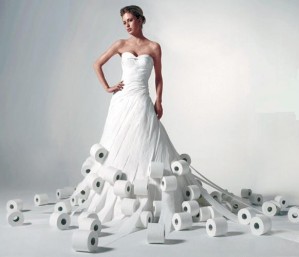
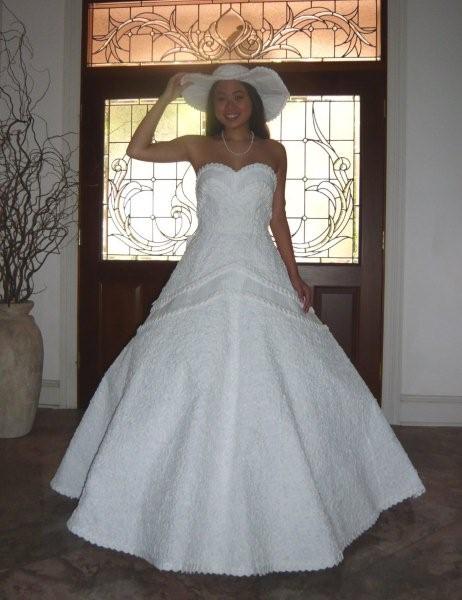
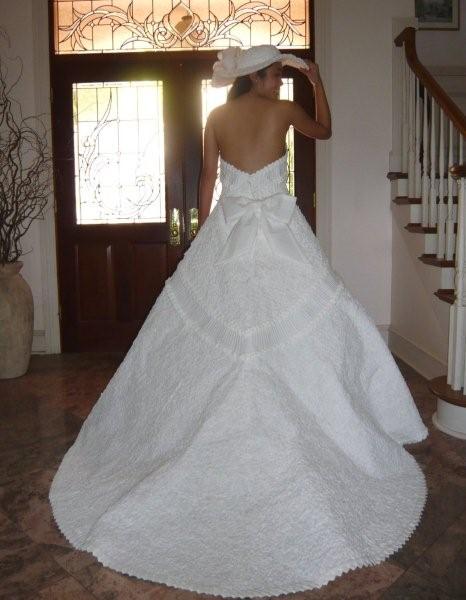

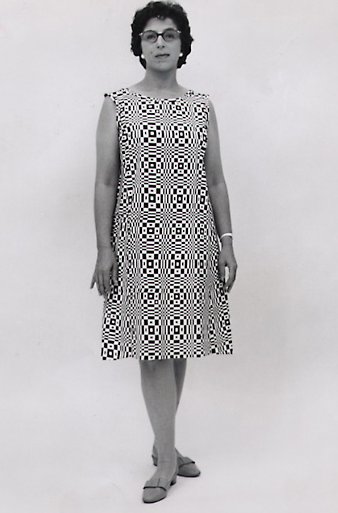

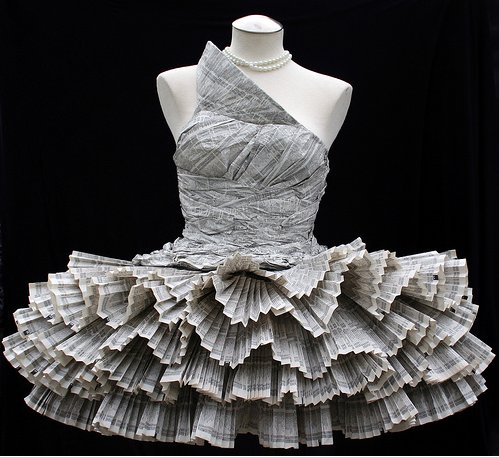

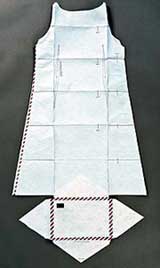
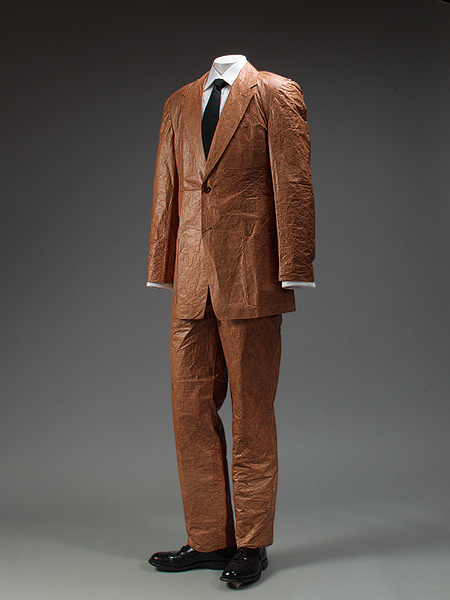
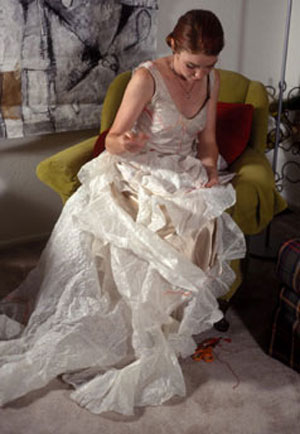
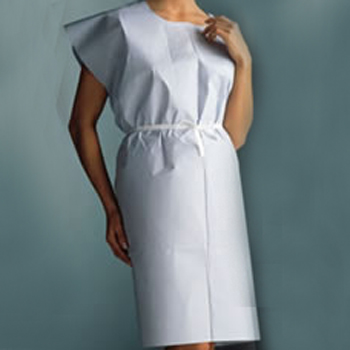
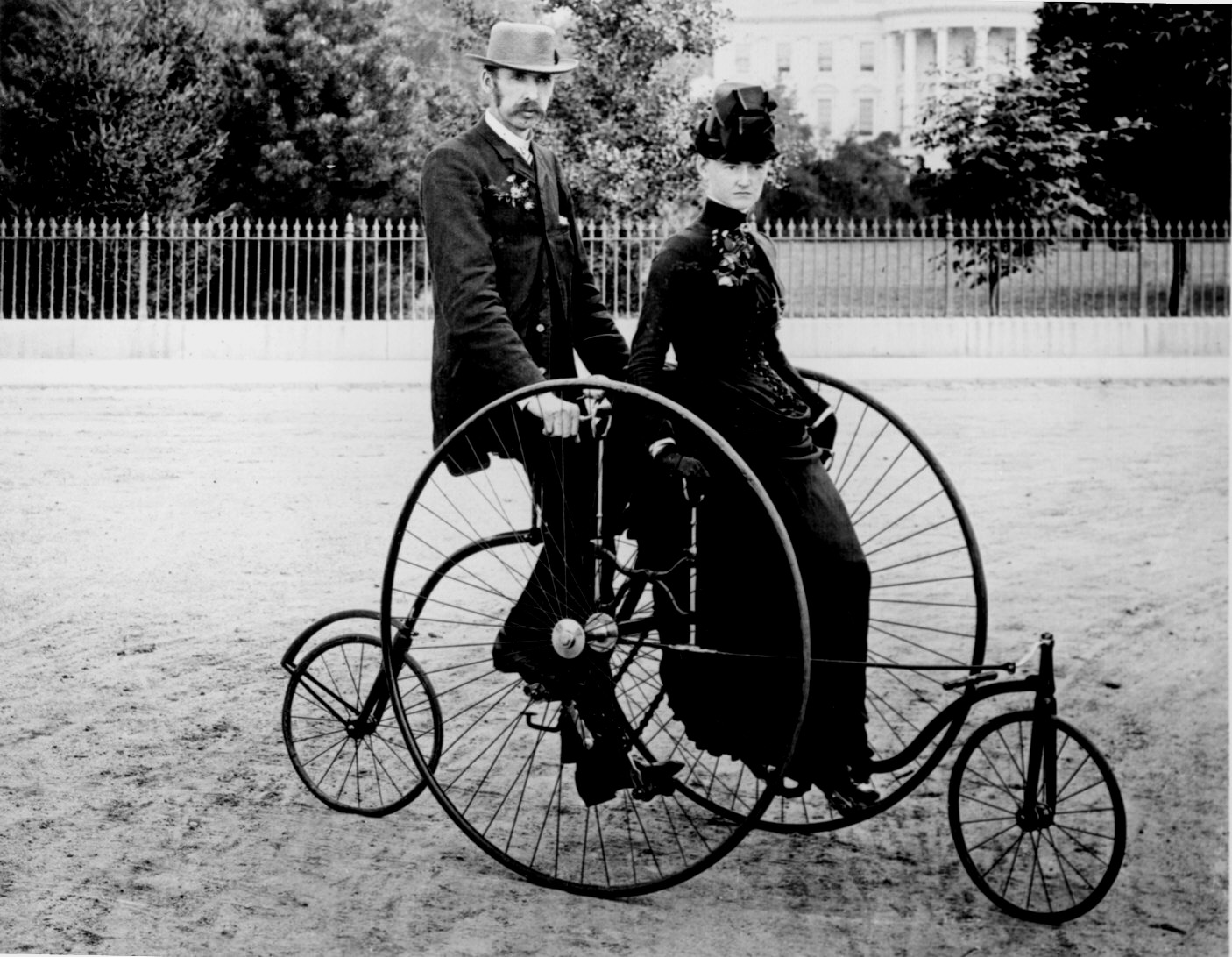
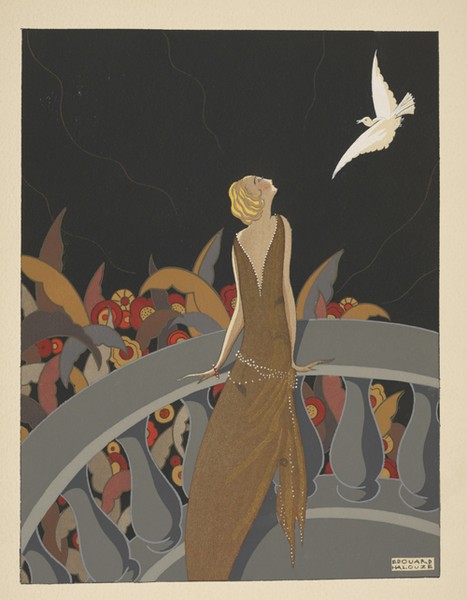
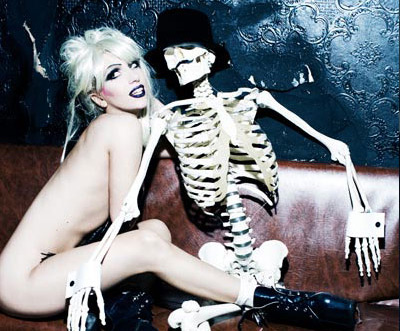

























2 comments
Alexander valencia says:
Apr 20, 2010
Hi Tove
Ã’m just suprised with all the posibilities of paper as a dress. Check this site of an artist based in UK called Poly, she uses paper in such a creative ways that’s worth to see, may be you’ve heard about her. http://www.polyscene.com/indexfol.htm
By he way, great blog you have!!! congrats.
Alex V.
Georgia says:
Jan 27, 2010
Project Runway did a paper dress challenge last season that fits in well with your article: http://nymag.com/daily/fashion/2009/09/project_runway_recap_episode_5.html. Tim Gunn did, of course, instruct the contestants in the history of paper as textile, but not as thoroughly as you!